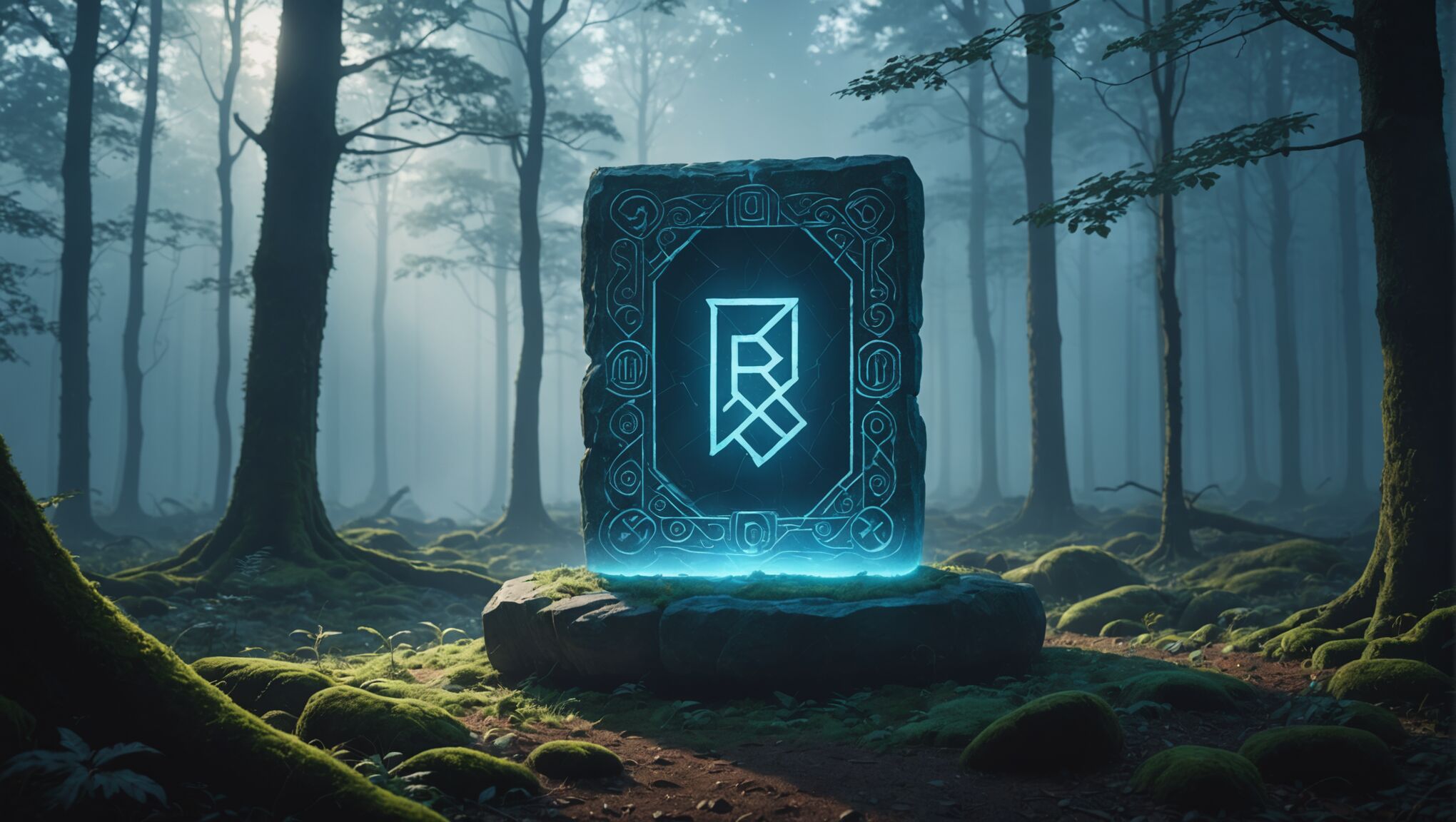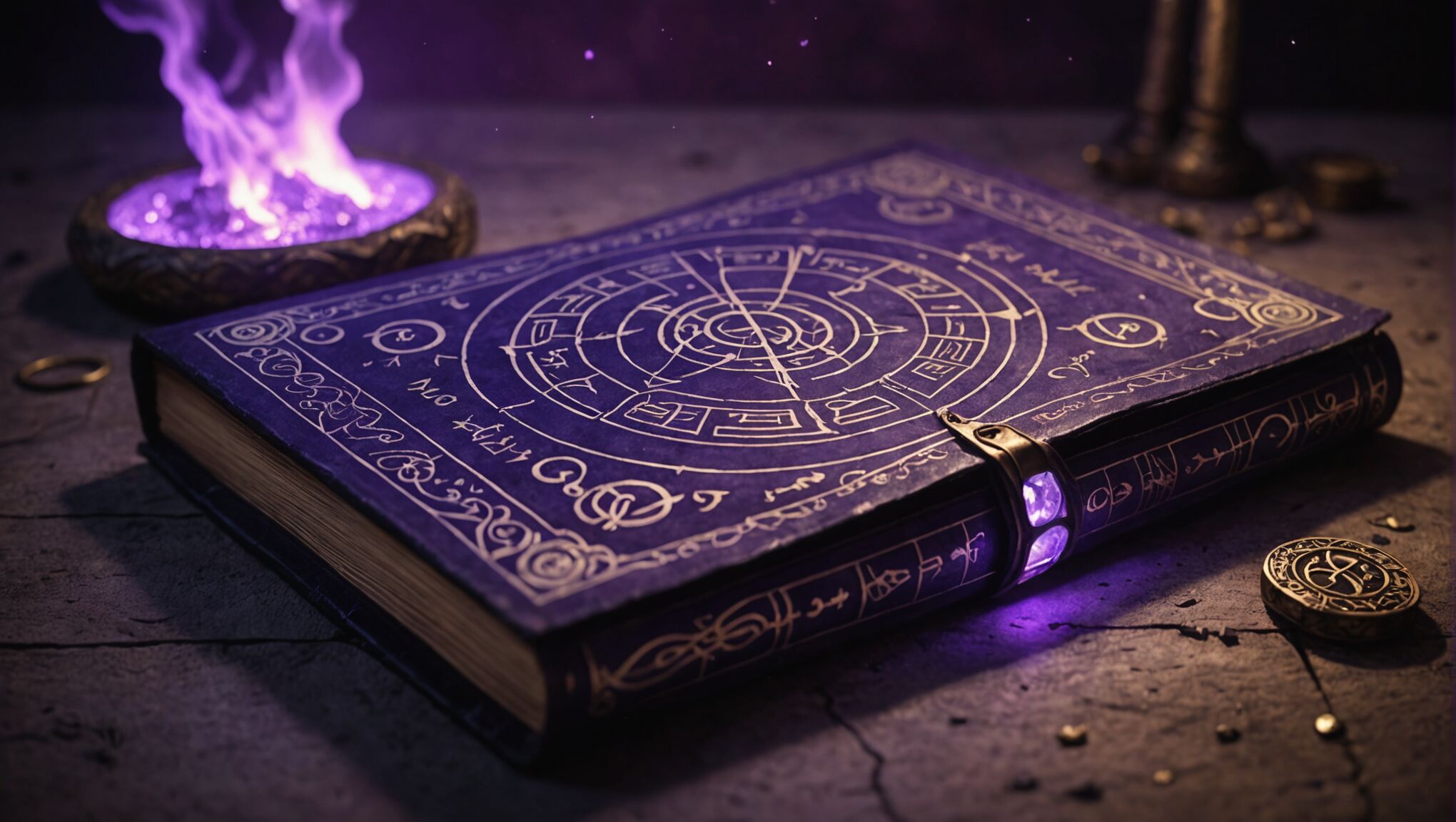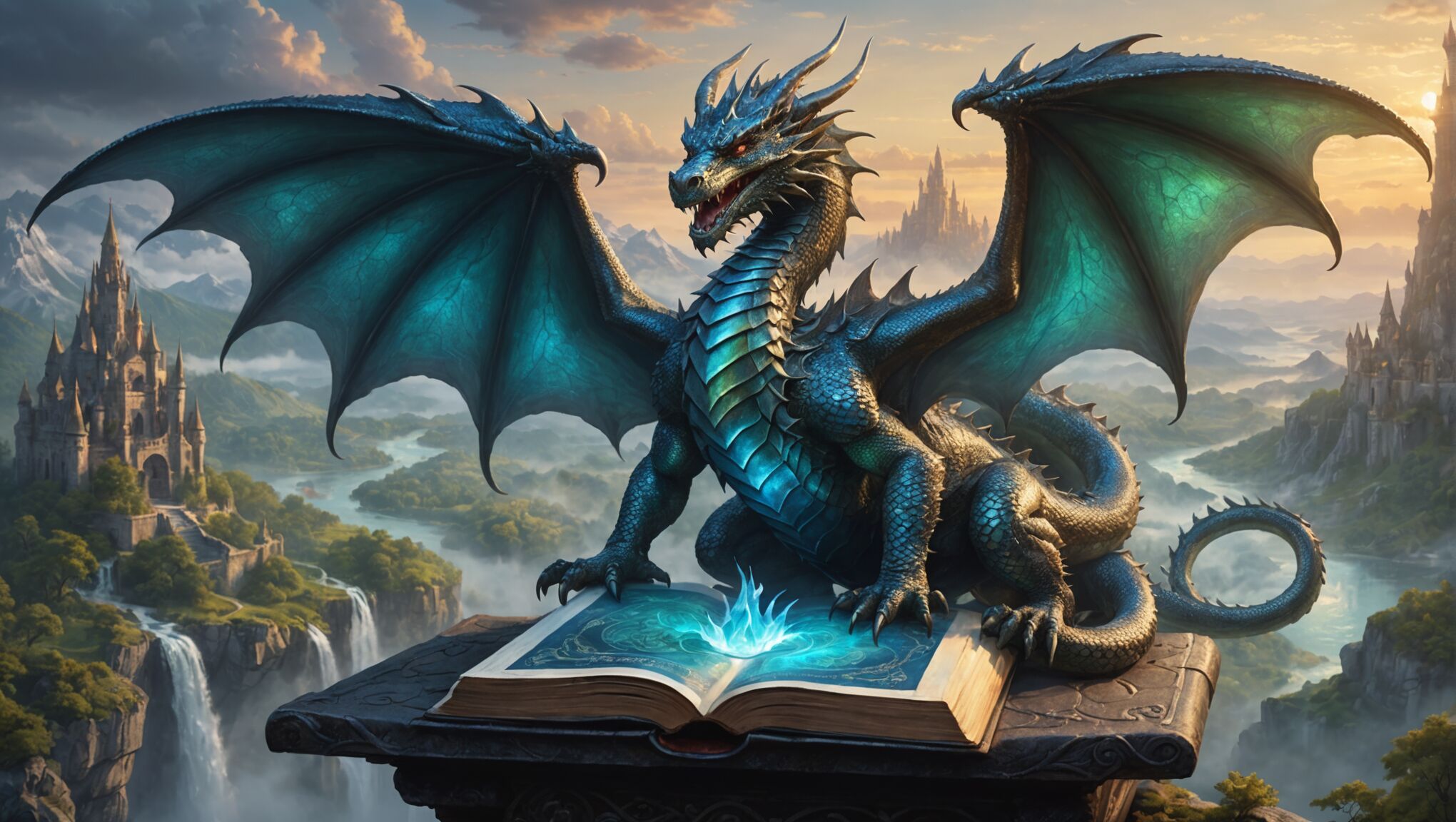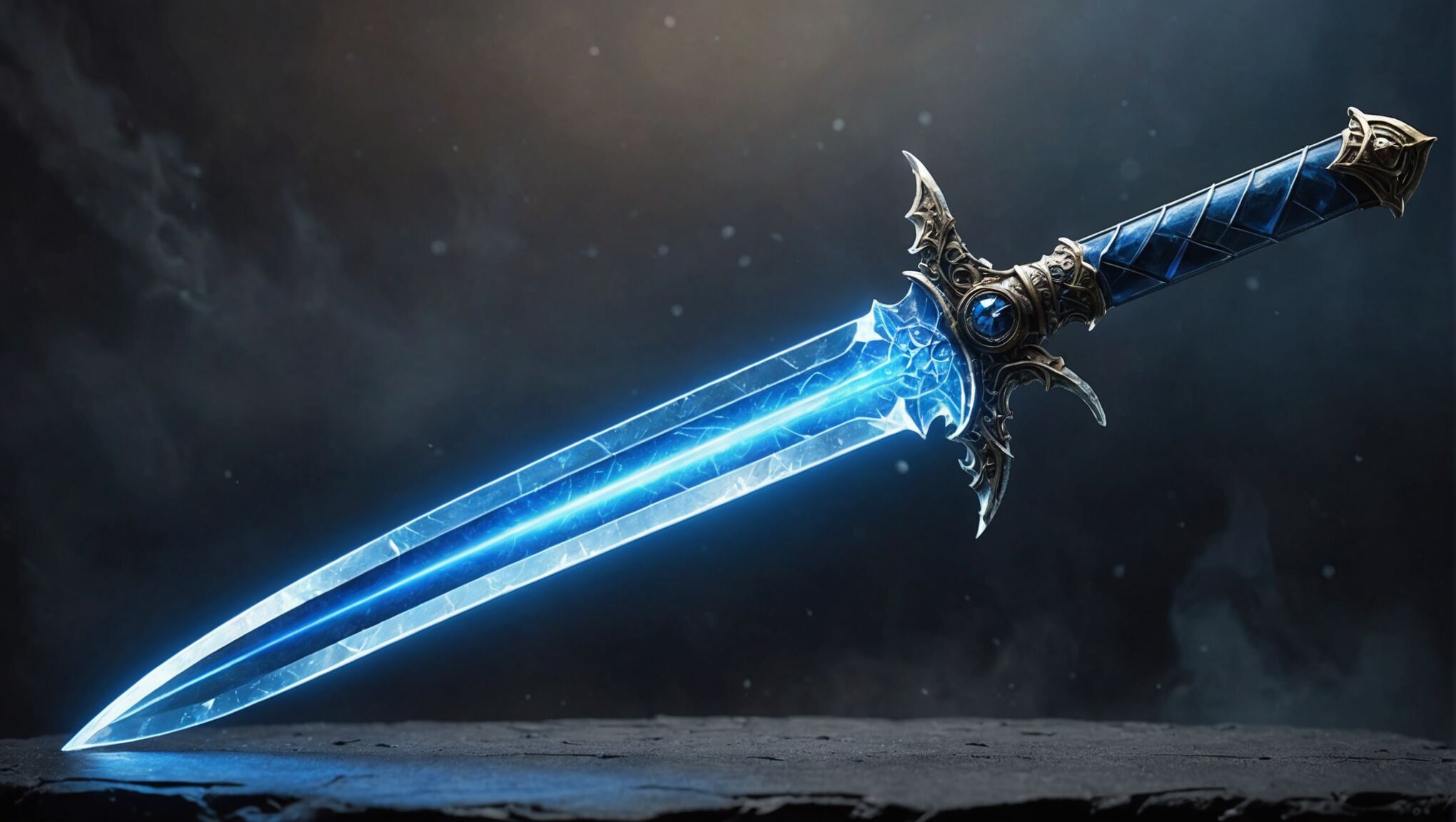blog
How to Create a Fantasy Book Cover for Print and Digital Markets
Fantasy book covers serve as gateways to enchanting worlds, capturing readers’ imaginations and hinting at the adventures within. Key elements that make a fantasy cover stand out include striking imagery, evocative symbols, and a sense of mystery or wonder. “A great cover is a visual promise,” and in fantasy, this promise often involves magical creatures, otherworldly landscapes, or powerful artifacts. Character depictions can range from shadowy silhouettes to detailed portraits, depending on the story’s focus. Atmospheric effects like mist, starry skies, or swirling magic add depth and intrigue. Iconic fantasy motifs such as swords, dragons, castles, or ancient runes can instantly communicate genre expectations. The interplay of light and shadow is crucial, often used to create a sense of drama or to highlight important elements. Textures, from rough stone to gleaming metal, can add tactile appeal and reinforce the fantasy setting. Borders or frames might incorporate intricate designs inspired by medieval illuminated manuscripts or Celtic knotwork. World-building elements unique to the book’s universe can set it apart from other fantasy covers. The overall style can vary widely, from photorealistic to highly stylized illustrations, but should always align with the tone and themes of the story. Successful fantasy covers balance these elements to create a cohesive, eye-catching design that entices readers to explore the magical realms within.
Choosing the right imagery and symbolism
 When selecting imagery and symbolism for a fantasy book cover, it’s crucial to choose elements that resonate with the story’s core themes and capture the essence of the magical world within. Begin by identifying key plot points, characters, or objects that are central to the narrative. These could include a magical artifact, a mystical creature, or a significant location that plays a pivotal role in the story.
When selecting imagery and symbolism for a fantasy book cover, it’s crucial to choose elements that resonate with the story’s core themes and capture the essence of the magical world within. Begin by identifying key plot points, characters, or objects that are central to the narrative. These could include a magical artifact, a mystical creature, or a significant location that plays a pivotal role in the story.
Consider the emotional tone of the book and select images that evoke those feelings. For instance, a dark and brooding fantasy might benefit from stark, shadowy imagery, while a light-hearted adventure could use brighter, more whimsical visuals. Symbolism can be particularly powerful in fantasy covers, as it allows for subtle storytelling and creates intrigue. Common symbols in fantasy include ancient runes, celestial bodies, or mythical beasts, each carrying its own set of associations and meanings.
“The symbol is the language of the Unconscious; the symbol is the father of all ideas.” – Carl Jung
Incorporating unique elements specific to the book’s world can set it apart from other fantasy covers. This might include a distinctive magical system, a particular creature unique to the story, or a landscape feature that defines the setting. These elements not only make the cover more intriguing but also give potential readers a taste of the originality within the pages.
When dealing with character imagery, consider whether to show full figures, faces, or symbolic representations. A character’s silhouette can be just as powerful as a detailed portrait, depending on the story and target audience. If featuring characters, ensure they accurately represent the descriptions in the book to avoid misleading readers.
Layering different elements can create depth and complexity in the cover design. For example, a foreground image of a character or object can be set against a background that hints at the broader world or conflict of the story. This layering can also be used to create a sense of mystery or to reveal hidden details that become apparent only upon closer inspection.
Remember that the imagery should work in harmony with other cover elements like typography and color scheme. The chosen images should not overwhelm the title or author name but rather complement them to create a balanced and attractive composition.
Lastly, consider the marketability of the chosen imagery. While staying true to the book’s content is paramount, the cover should also appeal to the target audience and stand out in a crowded marketplace. Research current trends in fantasy cover design, but don’t be afraid to break conventions if it serves the book’s unique identity.
Color selection and mood creation

Color is a powerful tool in creating the mood and atmosphere for a fantasy book cover. The right color palette can instantly convey the tone of the story, whether it’s a dark and brooding epic or a light-hearted magical adventure. Rich, deep colors like royal purple, emerald green, and midnight blue often evoke a sense of mystery and magic, while softer, ethereal hues can suggest dreamlike realms or fairytale settings.
When selecting colors, consider the emotional associations they carry. For instance, red might represent passion, danger, or power, while gold can symbolize wealth, divinity, or ancient magic. Earth tones can ground a fantasy world in natural elements, while metallic accents can add a touch of otherworldly glamour or hint at valuable artifacts within the story.
Contrast plays a crucial role in creating visual impact. A stark contrast between light and dark elements can dramatize the cover and draw attention to key focal points. Alternatively, a monochromatic or analogous color scheme can create a cohesive, immersive feeling that pulls the viewer into the fantasy world.
Consider the use of color gradients to suggest transitions between realms or to create a sense of depth. A shift from dark to light tones can imply a journey from danger to hope, while a blend of cool to warm colors might represent a change in the story’s emotional landscape.
The saturation and brightness of colors also contribute significantly to mood creation. Vibrant, saturated colors can evoke energy and excitement, perfect for action-packed fantasies. In contrast, muted or desaturated tones might better suit a more somber or introspective tale, or one set in a world of faded magic.
Color overlays can unify disparate elements on a cover and add a magical quality to images. A subtle colored mist or a glowing aura can transform ordinary scenes into something extraordinary, hinting at the fantastical nature of the story within.
Ready to design for both print and digital markets? Read more on our homepage.
When creating covers for a series, establish a consistent color palette that ties the books together while allowing for individual variations. This helps with brand recognition and creates a cohesive look across multiple volumes.
Remember that colors can appear differently in print versus on digital screens. It’s essential to test your color choices in both formats to ensure they maintain their intended impact across all platforms. Additionally, consider how the colors will look when reduced to thumbnail size, as this is often how potential readers will first encounter the cover online.
Ultimately, the color selection should work in harmony with the imagery, typography, and overall design to create a cohesive and compelling fantasy book cover that captures the essence of the story and entices readers to dive into the magical world within its pages.
Typography and title placement
The typography and title placement on a fantasy book cover are crucial elements that can make or break the overall design. The font choice should reflect the tone and setting of the story, whether it’s an elegant script for a romantic fantasy or a bold, rugged typeface for an epic adventure. Consider using custom lettering or modified existing fonts to create a unique look that stands out in the market.
When selecting a font, ensure it’s legible at various sizes, as your cover will be viewed both as a full-size image and as a thumbnail online. Avoid overly ornate fonts that may look appealing up close but become illegible when scaled down. It’s often effective to use a combination of fonts, pairing a decorative typeface for the title with a simpler, complementary font for the author’s name and any subtitles.
The placement of the title should be strategic, typically occupying a prominent position on the cover. Common placements include the top third of the cover, centered, or integrated with the cover art. Experiment with different positions to find what works best with your imagery and overall composition.
Consider the following techniques to enhance your title:
| Technique | Effect |
| Embossing or debossing | Adds depth and tactile interest |
| Metallic or glossy finishes | Creates a magical or luxurious feel |
| Shadow effects | Increases readability and drama |
| Text wrapping | Integrates title with imagery |
The size of the title should be proportionate to the cover and balanced with other elements. A general rule is to make the title large enough to be read easily from a distance, but not so large that it overwhelms the artwork.
Color plays a significant role in typography as well. Choose a color for your title that contrasts well with the background to ensure readability. Consider using gradients or textures within the letters to add depth and interest. You might also explore how the title interacts with the cover art, such as having elements of the imagery weave through or around the letters.
For series books, establish a consistent typographic style that can be carried across multiple covers. This might involve using the same font and placement for each title, with slight variations in color or effects to distinguish individual books while maintaining a cohesive brand.
Don’t forget about the author’s name, which is particularly important for established writers. The size and placement of the author’s name should reflect their status in the market. For well-known authors, the name might be as large as or even larger than the title.
Lastly, consider any additional text elements that might be necessary, such as subtitles, series information, or endorsements. These should be incorporated in a way that doesn’t clutter the cover or detract from the main title and artwork. Use hierarchy in size and placement to guide the reader’s eye through the information in order of importance.
Remember that typography is not just about readability; it’s an integral part of the cover’s artistry. The right typographic choices can enhance the mood, reinforce the genre, and create a memorable visual identity for your fantasy book.
Composition and layout techniques
 When crafting a fantasy book cover, the composition and layout are crucial elements that can make or break the overall design. A well-structured layout guides the viewer’s eye across the cover, highlighting key elements and creating a cohesive visual narrative.
When crafting a fantasy book cover, the composition and layout are crucial elements that can make or break the overall design. A well-structured layout guides the viewer’s eye across the cover, highlighting key elements and creating a cohesive visual narrative.
Start by establishing a clear focal point – this could be a character, a magical object, or a striking landscape element. Position this focal point strategically, often using the rule of thirds to create balance and visual interest. The focal point should draw the viewer’s attention immediately and convey the essence of the story.
Layering is a powerful technique in fantasy cover design. Create depth by placing elements in the foreground, middle ground, and background. This approach can suggest a vast, complex world beyond what’s immediately visible, enticing readers to explore further. Use overlapping elements to guide the eye through the composition and create a sense of movement or action.
Negative space is just as important as the filled areas. Don’t be afraid to leave some breathing room on your cover. This can create a sense of mystery or vastness, which is often appropriate for fantasy settings. Clever use of negative space can also form suggestive shapes or hidden images that reward closer inspection.
Consider the flow of the composition. Use leading lines – created by elements like swords, tree branches, or streams of magic – to direct the viewer’s gaze towards important areas of the cover, such as the title or key imagery. These lines can be subtle but should work together to create a cohesive visual path.
Symmetry and asymmetry both have their place in fantasy cover design. Symmetrical layouts can convey a sense of order, power, or formality, while asymmetrical designs can create tension, dynamism, or a sense of the unexpected. Choose the approach that best fits the tone of your story.
Incorporate framing elements to contain and focus attention on the central imagery. This could be achieved through architectural features, natural elements like tree branches or rock formations, or more abstract designs like swirling magic or celestial patterns.
When working with multiple elements, pay attention to their visual weight and how they balance each other. This doesn’t necessarily mean creating perfect symmetry, but rather ensuring that no part of the cover feels disproportionately heavy or light compared to the rest.
Consider the hierarchy of information on your cover. The title should typically be one of the most prominent elements, followed by key imagery, and then the author’s name (unless the author is well-known, in which case their name might take precedence). Any additional text, such as taglines or series information, should be integrated thoughtfully without cluttering the design.
Remember that your cover will be viewed at various sizes, from full-size prints to small online thumbnails. Ensure that your composition works well at different scales by testing it at various sizes throughout the design process.
Lastly, think about how your cover will stand out on a bookshelf or in an online marketplace. A strong, unique composition can help your book catch a potential reader’s eye amidst a sea of other titles.
By carefully considering these composition and layout techniques, you can create a fantasy book cover that not only captures the imagination but also effectively communicates the essence of your story to potential readers.
Adapting designs for print and digital formats

When adapting your fantasy book cover design for both print and digital formats, it’s crucial to consider the unique requirements of each medium. For print covers, focus on high-resolution images that will remain crisp and detailed when printed. Pay attention to bleed areas, allowing essential elements to extend beyond the trim line to ensure full coverage after cutting. Consider the texture and finish of the physical book cover, as matte or glossy finishes can significantly impact the appearance of colors and details.
For digital formats, optimize your design for various screen sizes and resolutions. Ensure that key elements, such as the title and author name, are legible even at thumbnail size, as this is often how readers first encounter books online. Test your cover on different devices to check how colors appear across various screens. You may need to adjust contrast and brightness to maintain the intended visual impact in digital formats.
Create multiple versions of your cover to suit different aspect ratios. While print books typically have a fixed aspect ratio, e-book covers may need to be adapted for various platforms. Consider creating a square version for some online retailers, as well as versions that work well in both portrait and landscape orientations for different e-reader displays.
Typography may need adjustments between print and digital versions. Fonts that look striking in print might not render well on screens, so consider using web-safe fonts or slightly thicker versions of your chosen typeface for digital covers. Ensure that any subtle design elements or small text remain visible and sharp when viewed on screens of various sizes.
Color management is critical when transitioning between print and digital. The CMYK color model used in printing can produce different results from the RGB model used in digital displays. Convert your design to both color spaces and make necessary adjustments to maintain consistency across formats. Be aware that some vibrant colors achievable in RGB might not be reproducible in print, so choose a color palette that translates well to both mediums.
For print covers, consider special finishes like embossing, foil stamping, or spot UV coatings to add tactile and visual interest. While these effects won’t translate directly to digital formats, you can create digital versions that simulate these enhancements through clever use of shading, highlights, and textures.
When designing for digital platforms, take advantage of the medium by creating animated or interactive cover elements for use in online promotions. These can include subtle movements, changing light effects, or reveal animations that capture attention in crowded online marketplaces.
File format and size considerations are also important. For print, prepare high-resolution PDF files that meet your printer’s specifications. For digital formats, create web-optimized JPG or PNG files that balance quality with fast loading times. Some platforms may have specific file size limits, so be prepared to compress your images without sacrificing too much quality.
Lastly, create a simplified version of your cover design that works well as a series brand or author logo. This can be used across various marketing materials, social media profiles, and other promotional content, helping to create a cohesive brand identity across both print and digital platforms.

